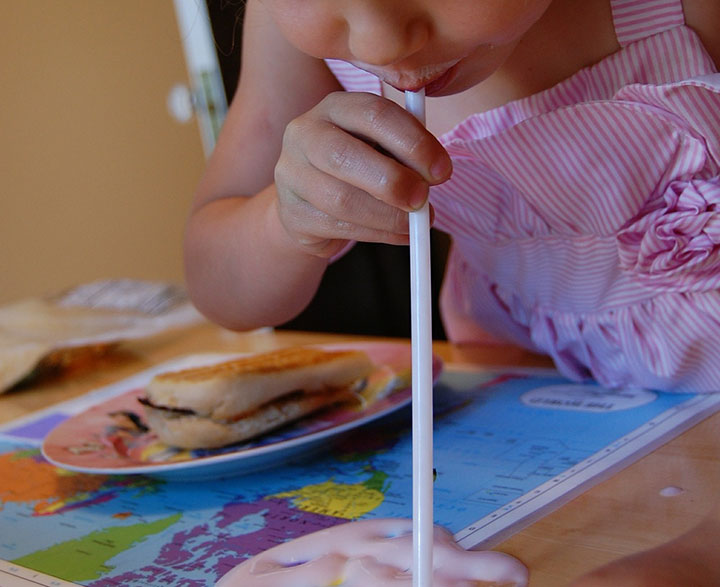Do you live by the “five-second rule?” You know, the one where, if you drop something on the floor and pick it up within five seconds, it’s deemed safe to eat? Well, it turns out timing isn’t everything.

A new study published in the journal Applied and Environmental Microbiology has concluded that bacteria can transfer on any surface no matter how quickly you pick it up.
READ MORE: New app puts food safety in consumers hands
The researchers tested four surfaces: wood, carpet, ceramic tile, and stainless steel. They also used four different types of foods: watermelon, bread, bread and butter and gummy candy. Armed with the foods and the different types of surfaces, they also tested four different times: less than a second, five seconds, 30 seconds and 300 seconds (5 minutes).
What they found — after 128 different scenarios that were done 20 times each — was that transference of microbes depended on a variety of factors.
First, watermelon had the most contamination with gummy candy having the least.
“Transfer of bacteria from surfaces to food appears to be affected most by moisture,” Donald Schaffner, professor and extension specialist in food science at Rutgers University-New Brunswick and lead author of the study said. “Bacteria don’t have legs, they move with the moisture, and the wetter the food, the higher the risk of transfer. Also, longer food contact times usually result in the transfer of more bacteria from each surface to food.”
Carpets had the least transference rates compared to that of tile and stainless steel. Wood, however, was found to be variable.
That’s not entirely surprising to Canadian scientist Jason Tetro, also known as “The Germ Guy.”
WATCH: Should you follow the 5-second rule? OK or no way?

“Most of the time the floors that we drop stuff on are pretty flat,” Tetro said. “So, there’s a good likelihood that you can have better transfer. If it’s carpet, you’re going to have less transfer because the bugs will go into the carpet.”
But there’s no need to panic.
“The majority of times, the microbes that you ingest will be harmless,” said Tetro. “But there are going to be times when there’s the potential that you’re going to get a pathogen.”
The Rutgers study found that timing didn’t play much of a role in whether or not microbes had transferred to your food.
“The five-second rule is a significant oversimplification of what actually happens when bacteria transfer from a surface to food,” Schaffner said.
“Bacteria can contaminate instantaneously.”
Tetro said that knowing the surface — when it was last cleaned, how clean the environment is, etc. — is more important than the timing.
“The chances of getting sick from a surface you know are very low,” he said.
READ MORE: Kids as young as 3 call themselves fat, refuse food because of weight gain
But forget the floor: there’s another place you probably want to avoid eating from: the kitchen sink.
“We’ve become aware of where the highest concentration of microbes that cause infections are going to be,” Tetro said. “And we are now aware that the sink basin is going to be the place where you’re going to see all sorts of different microbes that could cause infections at high enough levels that could cause harm.”
So when you’re dropping food, consider a few factors: the type of food, the surface and whether or not you know the area.
“If it’s a surface that you would be comfortable licking, then don’t worry about it,” said Tetro.
- ‘Bacterial vampirism’: Deadly pathogens attracted to human blood, study finds
- Shoppers faces proposed class action over claims company is ‘abusive’ to pharmacists
- Most Canadian youth visit dentists, but lack of insurance a barrier
- Landmark smoking ban that would phase out sales passes U.K. parliament




Comments